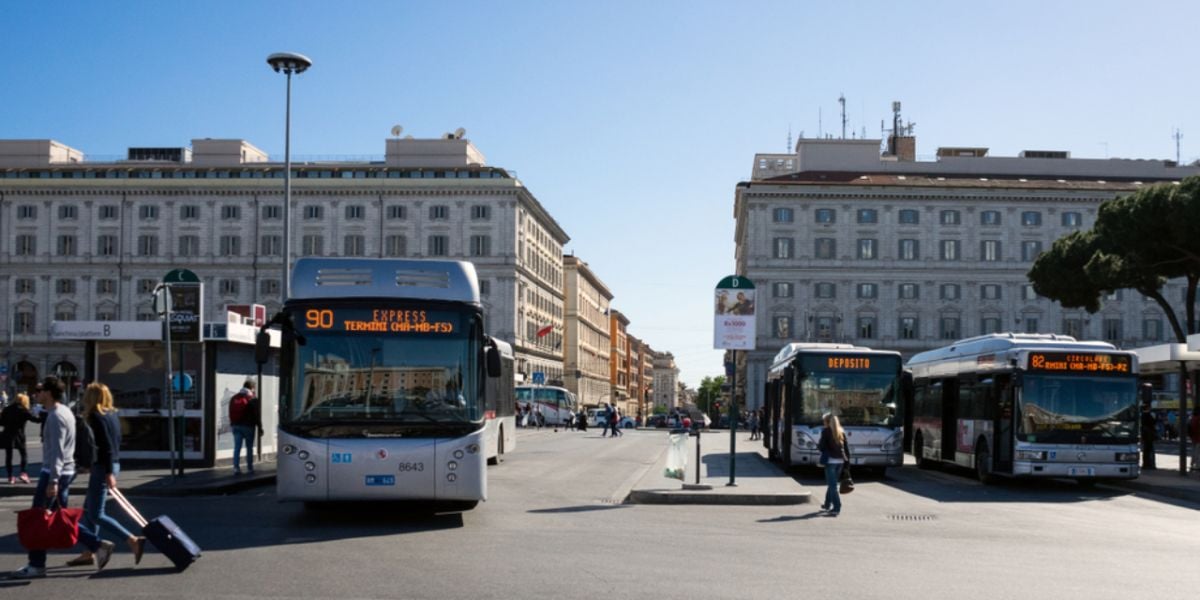
There are several ways to get to your workplace in the Italian capital, depending on where you work and live. Cars and scooters are the primary means of transport in Rome, although traffic is often heavy, especially during rush hour. Public transportation is generally problematic and less reliable than in Milan, where the network is well established, and urban areas are better served.
Driving in Rome
Many expatriates choose, as do Romans, to use their personal vehicle to get around Rome, especially to go to work. This is the most comfortable and safest way to get around Rome, but not necessarily the fastest because of the many traffic jams and/or roadworks. If you choose to drive in Rome, you will need to be patient with both traffic and parking. Beware also of the driving style, which is generally more chaotic than in the rest of Europe. As an alternative to the car, it is advisable to use a scooter, which is allowed almost everywhere in the city, especially in the historic center, and is easier to park. Beware of motorists, who are sometimes brusque, to avoid accidents. If you choose this means of transport, always wear a helmet.
Good to know:
The cost of petrol in Rome is around €1.80 per liter and diesel €1.90 (December 2022). If you have an electric car, there are many charging points throughout the city, as you can see on the Chargemap website.
Public transportation in Rome
Public transport in Rome, depending on the area where you work, can be the best way to commute to work. Three metro lines are currently active, from 5.30 am to 11.30 pm: the orange A-line, Anagnina-Battistini, the blue B line Laurentina - Rebibbia (and the B1 Laurentina-Jonio), as well as the recently inaugurated C line Monte Compatri/Pantano - Clodio-Mazzini. The latter is still under construction, and the next station should be opened at the Colosseum, with others opening in the future as far as the Vatican. Work has been going on for a very long time since 2007 and has often been suspended due to the many ancient remains found in the subsoil of the Eternal City.
More tram lines than the metro cross the center of Rome. Alternatively, you can get around by bus, which does not have a fixed timetable and is often subject to long delays or cancellation of journeys due to heavy traffic and vehicle problems.
The urban train is another excellent way to get to work for those who do not work or live in the center of Rome. For example, the Orte/Fara Sabina- Fiumicino aeroporto, Viterbo-Roma or Civitavecchia-Roma Termini lines stop at stations such as Trastevere, Ostiense, Valle Aurelia, Nomentana, or Magliana. You can find all the maps and routes of these lines on the Rome ATAC public transport website.
A ticket costs €1.50, a monthly pass €35, and an annual pass €250 for all transport services within Rome. Please note that fares increase if you are traveling outside the city area and, more generally, in the Lazio region, especially if you have to buy a season ticket that also covers train travel. All passes and fares are available on the website of the Rome urban transport company ATAC.
Other means of transport in Rome
If you want to use an equivalent service, there is the mobile application Scooterino, a service between individuals on scooters based on the carpooling model. Car sharing is quite popular with expats in Rome with services such as Roma Mobilità, Enjoy and ShareNow. If you want to rent a scooter, eCooltra and CityScoot offer a 100% electric fleet. However, some require an Italian driving license and a credit card issued by an Italian banking institution in order to rent their vehicles.
For the more sporty, there are bike-sharing services such as Roma Bike Sharing, a service provided by the Municipality of Rome, and Uber Lime, which was born out of a collaboration. Finally, if you are a scooter fan, you can rent one from Lime, Helbiz, or Dott.
Getting around Rome by taxi
Taxis are undoubtedly the most expensive form of transport in Rome. They are available everywhere, and the cost varies according to the time of day: during the day on weekdays, the starting price is €3.00. During holidays and public holidays, the basic price is €5.00 per day. At night, the rate starts at €7.00. You can book your taxi by phone by calling 060609 or via the mobile application FreeNow or AppTaxi.
An alternative to traditional taxis is Uber. Consider downloading the mobile app.
Useful link:
We do our best to provide accurate and up to date information. However, if you have noticed any inaccuracies in this article, please let us know in the comments section below.








